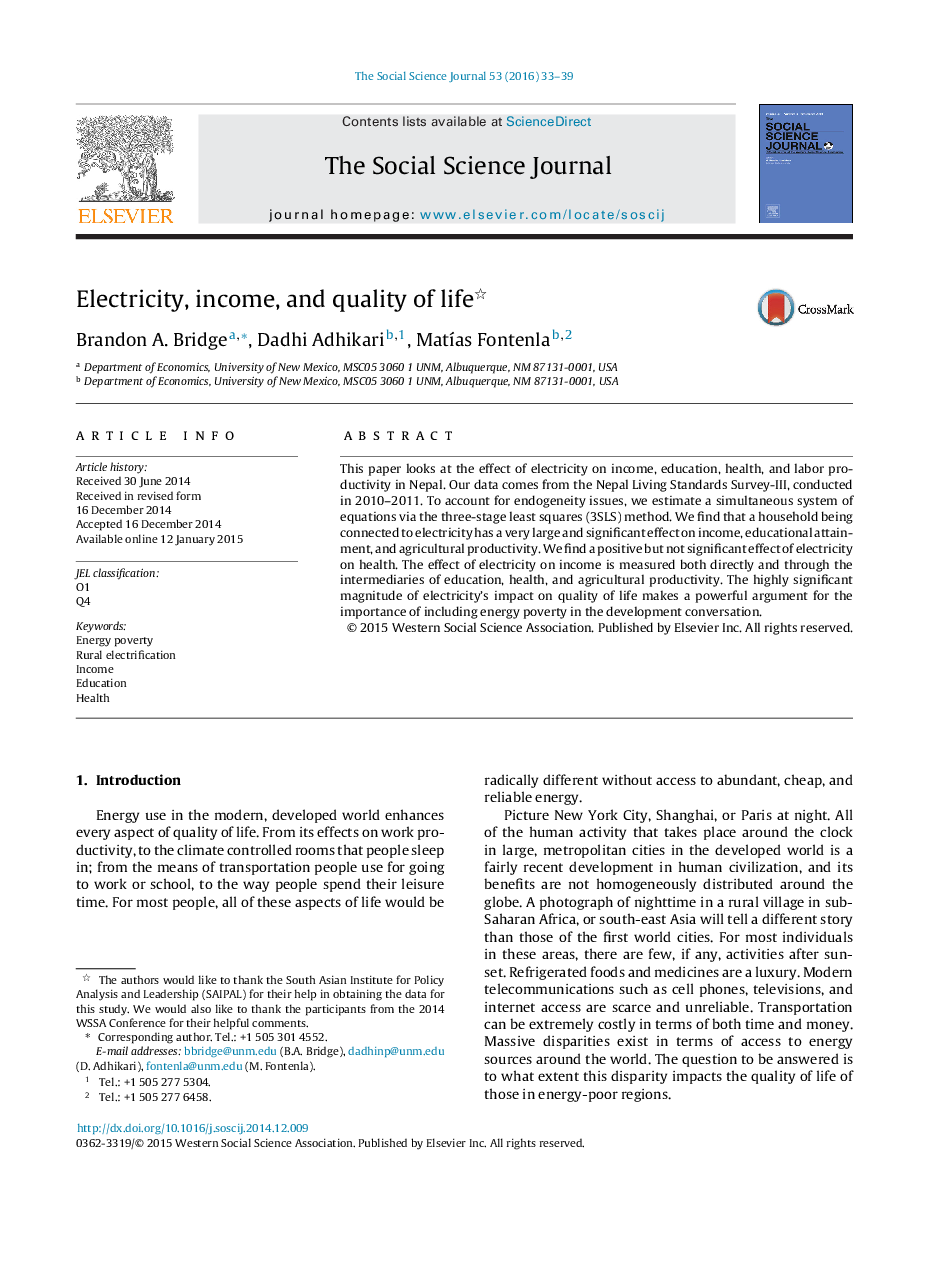| Article ID | Journal | Published Year | Pages | File Type |
|---|---|---|---|---|
| 139971 | The Social Science Journal | 2016 | 7 Pages |
•Between 1995 and 2011, Nepal experienced a sharp decline in poverty and an increase in access to electricity.•Using the data from the Nepal Living Standard Survey-III and employing the three-stage least squares method, this paper finds that having access to electricity increases consumption both directly and through the intermediaries of education, health, and agricultural productivity.•There is a reverse impact as well i.e. an increased level of consumption or income increases the probability of having access to electricity.
This paper looks at the effect of electricity on income, education, health, and labor productivity in Nepal. Our data comes from the Nepal Living Standards Survey-III, conducted in 2010–2011. To account for endogeneity issues, we estimate a simultaneous system of equations via the three-stage least squares (3SLS) method. We find that a household being connected to electricity has a very large and significant effect on income, educational attainment, and agricultural productivity. We find a positive but not significant effect of electricity on health. The effect of electricity on income is measured both directly and through the intermediaries of education, health, and agricultural productivity. The highly significant magnitude of electricity's impact on quality of life makes a powerful argument for the importance of including energy poverty in the development conversation.
